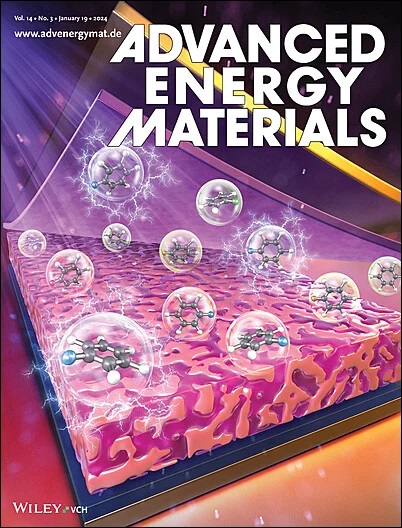Vacancy-Anchored Sub-Nanometer Ru Catalyst with High Activity and Strong Durability at 800 °C Dry Reforming of Methane
IF 24.4
1区 材料科学
Q1 CHEMISTRY, PHYSICAL
引用次数: 0
Abstract
Dry reforming of methane (DRM) represents an important way to convert both CO2 and CH4 to reduce greenhouse effects and produce valuable chemical products. Owing to the strong bonding energies of both CO2 and CH4 molecules, DRM usually proceeds at a high temperature, which inevitably causes catalyst sintering, leading to catalyst deactivation. This work develops a highly stable sub-nanometer Ru catalyst on a Ni-doped MgO support using Mg2+ vacancies as anchors. The optimized Ru1.5/Ni1-MgO-R catalyst displays 90% CH4 conversion and 92% CO2 conversion to syngas in DRM at 800 °C. More importantly, it exhibits strong durability and can run continuously for more than 1200 h. Both the characterizations and the density functional theory (DFT) calculations demonstrate that the Ni2+ substituted Mg2+ in the MgO matrix produces Mg2+ vacancies (MgV), which can stabilize sub-nanometer Ru clusters of ≈0.9 nm. Moreover, the presence of Mgv-Ru8 clusters strongly stabilizes sub-nanometer Ru. This study contributes valuable insights into the design of sub-nanometer metal catalysts with strong sintering resistance at high temperatures.

求助全文
约1分钟内获得全文
求助全文
来源期刊

Advanced Energy Materials
CHEMISTRY, PHYSICAL-ENERGY & FUELS
CiteScore
41.90
自引率
4.00%
发文量
889
审稿时长
1.4 months
期刊介绍:
Established in 2011, Advanced Energy Materials is an international, interdisciplinary, English-language journal that focuses on materials used in energy harvesting, conversion, and storage. It is regarded as a top-quality journal alongside Advanced Materials, Advanced Functional Materials, and Small.
With a 2022 Impact Factor of 27.8, Advanced Energy Materials is considered a prime source for the best energy-related research. The journal covers a wide range of topics in energy-related research, including organic and inorganic photovoltaics, batteries and supercapacitors, fuel cells, hydrogen generation and storage, thermoelectrics, water splitting and photocatalysis, solar fuels and thermosolar power, magnetocalorics, and piezoelectronics.
The readership of Advanced Energy Materials includes materials scientists, chemists, physicists, and engineers in both academia and industry. The journal is indexed in various databases and collections, such as Advanced Technologies & Aerospace Database, FIZ Karlsruhe, INSPEC (IET), Science Citation Index Expanded, Technology Collection, and Web of Science, among others.
 求助内容:
求助内容: 应助结果提醒方式:
应助结果提醒方式:


